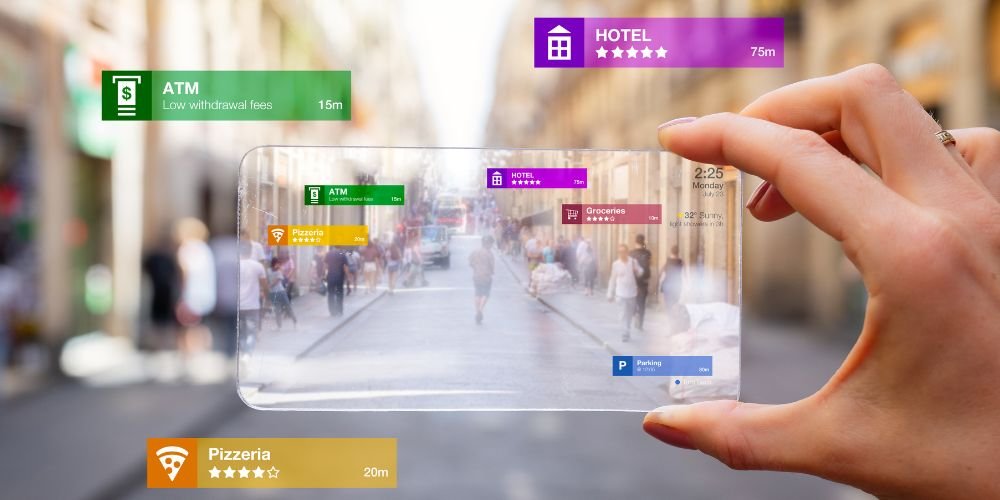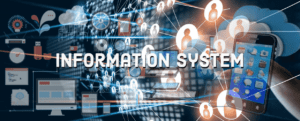Augmented Reality (AR) technology has emerged as a transformative force, reshaping how individuals perceive and interact with the world around them. This article conducts a comprehensive analysis of the current state of the AR market, exploring key trends, market dynamics, and challenges and offering insights into the future outlook of this dynamic sector.
Market Overview
Augmented Reality (AR) overlays digital information onto the physical world, enhancing real-world experiences with computer-generated content. The global augmented reality market is experiencing rapid growth driven by advancements in AR hardware, software, and applications across diverse industries.
Key Market Trends
Several influential trends are shaping the Augmented Reality market, signaling the transformative potential of this immersive technology:
Expansion Across Industries
Augmented Reality is expanding its presence across various industries, including gaming, retail, healthcare, education, and manufacturing. In gaming and entertainment, AR offers interactive experiences and immersive storytelling. In retail, it enables virtual try-on experiences and interactive product visualization. AR facilitates medical training, patient education, and surgical assistance in healthcare. In education, it creates engaging learning environments, while in manufacturing, AR enhances maintenance, repair, and training processes.
Advancements in Hardware and Software
The market is witnessing significant advancements in AR hardware and software. Innovations such as AR glasses, headsets, and smart devices enhance the AR experience. Meanwhile, software developers create compelling AR applications, ranging from mobile apps and games to enterprise solutions and industrial tools.
Integration with the Internet of Things (IoT) and Wearables
Augmented Reality is increasingly integrated with the Internet of Things (IoT) and wearables, creating synergies between digital and physical environments. AR-enabled wearables like smart glasses and headsets offer hands-free access to contextual information, real-time data visualization, and immersive experiences, driving innovation in various industries.
Enterprise Adoption for Training and Visualization
Augmented Reality is gaining traction in enterprise applications, particularly for training, visualization, and remote assistance. Manufacturing, construction, and field service industries leverage AR to improve employee training, streamline operations, and enhance productivity. AR-based training programs offer interactive and immersive learning experiences that enable users to acquire new skills more effectively.
Challenges
Despite the positive trends, the Augmented Reality market faces certain challenges that impact its widespread adoption and integration:
User Experience and Interface Design
Creating intuitive and user-friendly AR experiences requires careful consideration of interface design and user experience principles. Designing effective AR interfaces seamlessly integrating digital content with the physical environment can be challenging, particularly for complex applications and use cases.
Privacy and Data Security Concerns
Augmented Reality raises privacy and data security concerns, particularly regarding collecting and processing personal data in AR applications. Ensuring compliance with data protection regulations and safeguarding user privacy is essential to building trust and confidence in AR technology.
Hardware Limitations and Cost
The adoption of AR hardware, such as smart glasses and headsets, is limited by cost, form factor, and performance factors. Overcoming these limitations and making AR hardware more accessible and affordable to a wider audience remains challenging for manufacturers and developers.
Future Outlook
The Augmented Reality market holds several key developments for the future, shaping the evolution of immersive technology and digital experiences:
Integration with Artificial Intelligence (AI) and Machine Learning (ML)
Integrating Augmented Reality with Artificial Intelligence (AI) and Machine Learning (ML) will drive innovation in AR applications. AI-powered AR experiences will offer personalized content, context-aware recommendations, and intelligent interactions, enhancing the utility and usability of AR technology.
Augmented Reality Cloud and Remote Collaboration
The development of Augmented Reality cloud platforms and remote collaboration tools will enable users to create, share, and interact with AR content from anywhere in the world. AR cloud infrastructure will facilitate persistent AR experiences, real-time data synchronization, and seamless collaboration across devices and locations.
Continued Expansion in Industry-Specific Solutions
Augmented Reality will continue to expand its footprint in industry-specific solutions tailored to the unique requirements of various sectors. AR will offer specialized applications and tools that enhance productivity, efficiency, and innovation across diverse industries, from retail and healthcare to manufacturing and education.
Conclusion
Augmented Reality technology is poised to revolutionize how individuals interact with the world around them, blurring the boundaries between the physical and digital realms. As the Augmented Reality market continues to evolve, addressing challenges related to user experience, privacy, and hardware limitations will be crucial. The future outlook is optimistic, with Augmented Reality set to become increasingly integrated into various industries, offering immersive experiences, innovative solutions, and new possibilities for collaboration and interaction. It is not just a technology but a gateway to a future where digital content enriches and enhances every aspect of our lives.












